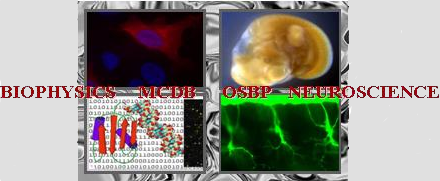Talk abstracts
Talk on Tuesday 11:15-11:35am submitted by Michael Kearse
New insights into the alternative translation initiation factor eIF2A
Daisy J. DaVita (Department of Biological Chemistry and Pharmacology, Center for RNA Biology), Michael G. Kearse (Department of Biological Chemistry and Pharmacology, Center for RNA Biology)
Abstract:
Canonical eukaryotic mRNA translation uses the heterotrimeric eukaryotic initiation factor 2 (eIF2) to deliver the initiator tRNA. However, eIF2A (not to be confused with the alpha subunit of eIF2) was the first initiator tRNA carrier discovered in eukaryotes, but further insights into its molecular mechanism dwindled once eIF2 was identified as the primary initiator tRNA carrier. The exact role of eIF2A in translation still remains a mystery despite it having nearly identical affinity for initiator tRNA and present at equal concentrations in cells as eIF2. Recent work has shown that eIF2A is required for cancer progression and proper long-term lipid metabolism in mice. Atypical of a translation factor, eIF2A primarily localizes to the nucleus, but can shuttle to the cytoplasm during cell stress. How and why eIF2A kept away from the translation machinery is unclear but it may be a mechanism for cells to only use eIF2A in specific conditions. To answer these questions, we first supplemented mammalian in vitro translation extracts with recombinant human eIF2A and found that excess recombinant eIF2A inhibits mRNA translation. To decipher which step of translation is inhibited, we used sucrose gradient ultracentrifugation along with various translation elongation inhibitors to capture and measure the levels of translation complexes at different stages in vitro. Using the non-hydrolyzable GTP analog GMPPNP to capture 48S initiation complexes (small subunit with eIFs at start codons), we identified that excess eIF2A reduces the abundance of small subunits at start codons. Excess eIF2A also inhibited translation directed by all four types of IRES elements, including those that do not require initiation factors or initiator tRNA, suggesting excess eIF2A sequesters the 40S subunit. Importantly, reactions supplemented with additional 40S subunits rescued translation. These data support a model that eIF2A must be kept away from the translation machinery to avoid sequestering the 40S ribosomal subunit.
Keywords: ribosome, translational control, mRNA
